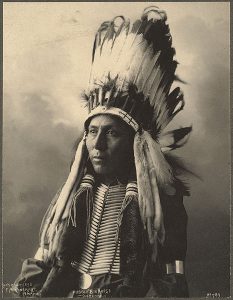It is important to know that the Comanche’s was a warrior tribe. They constantly involve themselves in conflicts with neighboring tribes. This is a sign that they want dominance over them, as well as showing that they are the better humans. The Comanche Warriors were very prideful of their kind. They would mock at opposing tribes and would just straight-up humiliate them, even taking a portion of an enemy tribe’s body as a trophy during their successful battles. They were considered as savage by their enemies, and they are more than willing to accept this “compliment.”
About the Comanche Warriors
The Comancheria is the name ordinarily given to the district of New Mexico, west Texas and adjacent zones possessed by the Comanche before the 1860s. The zone was enigmatically characterized and moved after some time, yet for the most part was depicted as circumscribed toward the south by the Balcones Fault, only north of San Antonio, Texas, proceeding with north along the Cross Timbers to incorporate a northern region that incorporated the Cimarron River and the upper Arkansas River, eastern part of the high Rockies. Comancheria was flanked to the west by the Mescalero Escarpment and the Pecos River, proceeding with north along the edge of the Spanish settlements in Santa Fe de Nuevo Mexico.

Prior to the Comanche extended out of present-day Wyoming in the mid-eighteenth century, the grounds now known as Conacher was home to a huge number of tribes – most strikingly the Apaches. A great part of the district had already been known as Apacheria.
Pekka Hamalainen contends that from the 1750s to the 1850s, the Comanches were the prevailing gathering in the Southwest, and the space they administered was known as Comancheria. Hamalainen calls it a domain. Defied with Spanish, Mexican, and American settlements on their borders in New Mexico, Texas, Louisiana, and Mexico, they attempted to build their own particular security, flourishing, and control.
The Comanches utilized their military energy to get supplies and work from the Americans, Mexicans, and Indians through robbery, tribute, and kidnappings. (See Comanche-Mexico War) Although controlled by savagery, the Comanche domain was principally a financial development, established in a broad business arrange that encouraged long-separate exchange.
Managing subordinate Indians, the Comanche spread their dialect and society over the district. Their domain crumpled when their towns were over and again crushed by pandemics of smallpox and cholera in the late 1840s; the populace dove from 20,000 to only a couple of thousand by the 1870s.
Even at the sight of modernization and development, they Comanche’s still showed that they have a warrior’s blood. They never hesitated to go to war with anyone, fully armed or not. Their tactics for war is unparalleled as they are very good horse riders. The horse is arguably the most important component of their battles as they would not be as successful without these beasts. They are very excellent when it comes to fighting on horseback. Not one tribe comes close to the ferocity that is the Comanche warriors.
